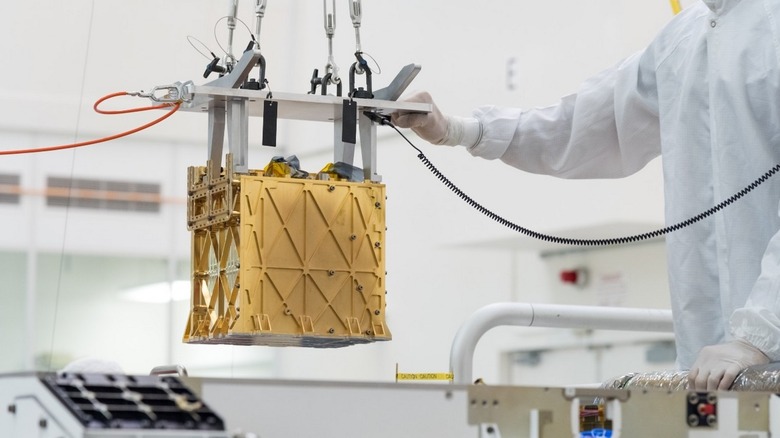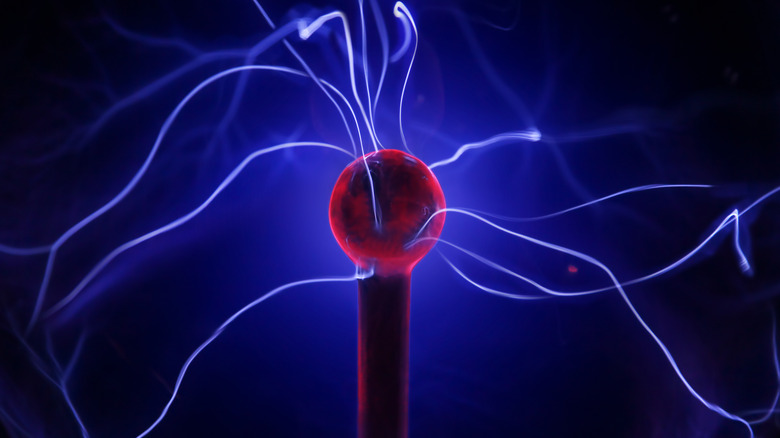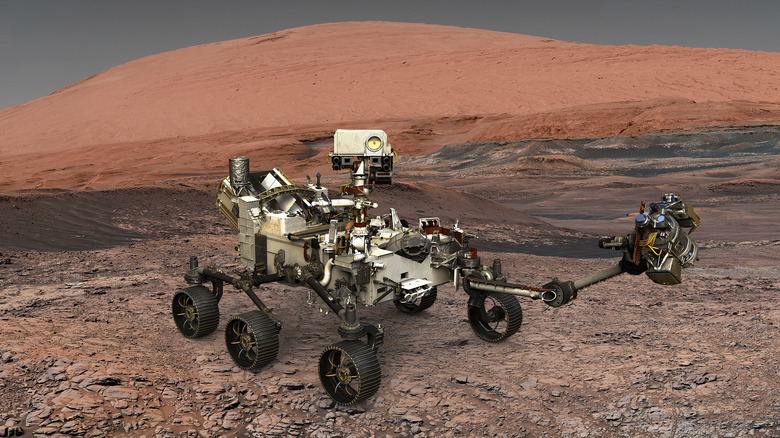How Plasma Could Speed Up The Dream Of Mars Colonization
Plasma — the energized gaseous phase of matter — is everywhere in the universe, and humanity is reaping its benefits by using it for everything from neon signs to sustainable waste management. An international team of experts has now proposed a system that employs plasma to synthesize oxygen using Mars' atmosphere. Or to put it more accurately, pulling oxygen out of the thin Martian air.
As part of the research, the team created Mars-like conditions in a laboratory and shot plasma beams at the gaseous mixture to synthesize oxygen gas. The findings, which have been published in the Journal of Applied Physics, note that plasma technology is scalable, versatile, and more importantly, it can produce more oxygen while also reducing the bulk of machinery needed for the process.
Right now, In Situ Resource Utilization (ISRU) is being seen as the most viable solution for exploration missions to distant bodies like Mars. Even for projects as ambitious as mining asteroids, research suggests establishing a floating base station around Mars' satellites is the way to go forward. That's primarily because hauling tons of critical resources like oxygen and rocket fuel is not practical for long voyages.
However, if there are systems that can utilize the local resources of Mars and turn them into usable materials like breathing gas, the logistics issues can be solved and the mission feasibility goes higher. Plasma tech for synthesizing oxygen on Mars will "likely play a very relevant role in future ISRU strategies," per the latest research.
Current state of resource management on Mars
NASA has already put an experimental system on the red planet that can convert carbon dioxide into oxygen. Dubbed Mars Oxygen In-Situ Resource Utilization Experiment (MOXIE), the machine is the size of a car battery and operates out of the Perseverance rover. In April of 2021, the MOXIE kit successfully managed to harvest oxygen gas on Mars for the first time.
Moxie relies on a system called Solid Electrolysis Cells (SOEC) that passes electricity between two electrodes to create a temperature higher than 1,000 K for breaking down carbon dioxide into water. But it has its own set of drawbacks. For example, the electrode material is susceptible to chemical degradation in the process.
To avoid this fate, it would require a working atmosphere of carbon monoxide, high temperature, and high pressure. All that requires extra gear like a compression system and thermal insulation system, which only adds to the bulk and also shoots up the power requirements.
MOXIE is currently designed to produce only 10 grams of oxygen per hour. According to NASA, To launch off the surface of Mars, astronauts would need 25 metric tons of oxygen and an additional 7 metric tons of rocket fuel. To achieve such numbers, the size of MOXIE needs to be enhanced roughly by a factor of 100. Therefore, it is critical that engineers and scientists develop better-performing, smaller, and more energy-efficient systems for oxygen generation on Mars, which is where the plasma tech can prove to be a gamechanger.
Why is plasma tech tailor-made for Mars?
The atmosphere of Mars is made up of roughly 96% carbon dioxide — the raw material that needs to be broken down for harvesting oxygen. Aside from feeding this oxygen into base stations, a miniaturized gas conversion device could also be used to produce breathing gas on the go, reducing the need for carrying bulky gas cylinders as astronauts explore the Martian surface.
Additionally, the carbon monoxide produced during the plasma-catalyzed breakdown of carbon dioxide can be mixed with oxygen to create the propellant material for rocket fuel. Further decomposition can lead to the production of carbon, which can subsequently be used for the synthesis of other organic molecules or find purpose in construction materials.
A promising possibility is that by altering the plasma arc's chemistry, nitrogen can also be trapped from the Martian atmosphere to make breathing gas and fertilizers, as well. Another advantage is the atmospheric conditions on Mars, which are even more favorable for plasma ignition and related processes compared to that on Earth.
The team behind the latest research notes that the pressure, temperature, and gas composition on Mars are more suited for plasma-based resource harvesting. For example, the argon and nitrogen present in the Martian atmosphere can further enhance the plasma dissociation process. Plus, the power requirements are also significantly lower.
Technical advantages of plasma tech
When it comes to critical machinery for long missions or dreaming about a crewed exploration on bodies like Mars, the biggest issues are cargo bulk, energy requirement, ease of usage, and efficiency. Bringing plasma into the picture has a few advantages on a technical level.
For example, once oxygen has been produced in the plasma chamber, the heat generated by the plasma arc can itself be used to harvest the gas. The ionic conductivity of a membrane for collecting the oxygen ions goes up above a certain temperature level, something that is already attainable in the plasma arc chamber.
The takeaway here is that with plasma technology coming into the picture, there is no need for dedicated pre-heating equipment to increase the membrane's temperature and enhance its oxygen pass-through. The free electrons in the plasma will provide an additional kinetic kick to further boost the movement of oxygen across the membrane.
At the end of the day, plasma-powered tech offers two critical advantages for such missions. It can deliver better synthesis performance by lowering the energy requirements for producing oxygen, and it can also reduce the mass of machinery required to produce the same amount of oxygen as the current system in place.
The tricky road ahead
Preliminary calculations made by the team suggest that a plasma reactor weighing 6 kilograms can produce 14 grams of oxygen per hour. On the other hand, a 15-kilogram reactor like the MOXIE system can only manage 5.5 grams of oxygen synthesized per hour. Overall, a plasma-powered system can generate six times more oxygen per hour per kilogram of machinery sent to Mars compared to that of a MOXIE-like system.
However, there are still a few challenges that need to be tackled. First, where would the oxygen produced by a large plasma system be stored on Mars? Plus, the plasma-membrane tech is still very much a work in progress in the research community. Another major hurdle is going from theory to practicality.
The plasma tech will first have to be demonstrated on Mars to prove that it is actually a more capable alternative to the MOXIE experiment. Doing so would require lots of funding, NASA support, and of course, a ride aboard a rocket to land on Martian soil. According to a report in the New Scientist, the team is hoping to build a working prototype of their plasma-powered oxygen synthesis system in the next couple of years.




